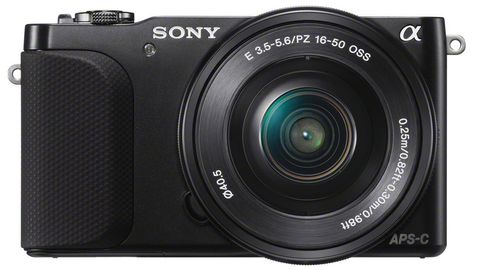Why you can trust TechRadar
At first glance, the Sony NEX-3N bears more than a passing resemblance to its older sibling, the Sony NEX-5R. Sony says that it has done this intentionally, since the NEX-5R has sold so well.
Now, we have in the Sony NEX-3N a much sleeker body than the camera it replaces, the F3, with a high quality feel, thanks to the metallic finish. It's also been shrunk down a significant amount, but without being too small so as to feel cheap.
The kit lens, being a power zoom, is also a good chunk smaller than the previous offering, making this a much more convenient option to slip into a bag, or possibly a large jacket pocket.
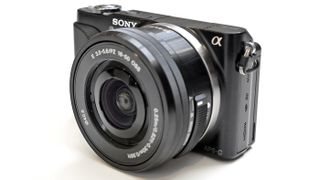
Although the grip at the front of the camera is smaller than on both its predecessor and the Sony NEX-5R, it's still solid enough to give you confidence when shooting one-handed.
There's no mode dial on top of the camera, unlike some of the other higher specced cameras in the range. Instead, a virtual dial can be accessed by pressing a button on the back of the camera. This is a little fiddly if you want to quickly change between modes, but given the target audience, it's completely understandable.
In keeping with that, there are also no dials for changing other parameters such as aperture and shutter speed. A dial which doubles up as a four-way directional pad is used for altering aperture or shutter speed, depending on the mode you're shooting in. When shooting in fully manual mode, pressing the downwards button on the four-way dial enables you to change between shutter speed and aperture.
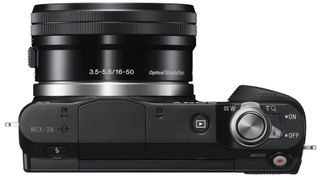
If you've used any of the Sony Cybershot, NEX or Alpha range of cameras before, you will likely be familiar with the menu system onboard the Sony NEX-3N. It can be a little frustrating at times, requiring a good sit down with the camera to get your head around the different areas that you need to search through.
For instance, if you want to make changes to settings such as white balance and metering, you'll find these options in the Brightness and Colour sub-menu, while you can change image ratio, and raw format shooting, in the Image Size submenu.
One of the most frustrating things, however - and pretty much all Sony cameras are guilty of this - is the number of options that can't be shot when shooting in raw format. Options including Creative Effects, Auto Object and Portrait Framing and Clear Image zoom are all not available when shooting in raw format.
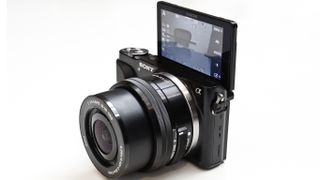
This means you need to head back into the menu system, switch raw format shooting off, then head back to what you were trying to do.
It's a very fiddly system that could be solved quite simply either by having a dedicated raw on/off button on the back of the camera or by having a window pop up if you tried to shoot something with raw format enabled to quickly switch to JPEG only. Better yet - having the ability to shoot these options in raw format.
For the first time in a Sony NEX camera, a zoom lever can be found around the shutter release. This is very similar to those found on compact cameras, such as those in Sony's Cyber-Shot range, and enables you to zoom the lens in and out without having to touch the lens itself. When using a fixed focal length lens, this activates the Clear Image Zooming, if that's turned on.
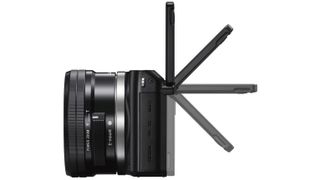
This is especially handy when shooting self-portraits, where twisting the lens might be awkward, or when shooting videos where you want to avoid moving the lens and introducing blur.
The tilting screen is very handy for shooting from awkward angles, and it seems perfect for the target audience. It's a little bit of a shame that it doesn't fully articulate, which would be more useful for shooting vertical images, but that would likely increase the camera's size and weight. As it is, when the screen is fully recessed, it sits flush against the body of the camera and adds to its sleekness.
As with several other cameras in Sony's range, the buttons on the back of the camera are customisable, which is useful for making the camera work exactly as you'd like it to - and it means that if you find that you regularly use one particular setting you can have it ready very quickly.
Amy has been writing about cameras, photography and associated tech since 2009. Amy was once part of the photography testing team for Future Publishing working across TechRadar, Digital Camera, PhotoPlus, N Photo and Photography Week. For her photography, she has won awards and has been exhibited. She often partakes in unusual projects - including one intense year where she used a different camera every single day. Amy is currently the Features Editor at Amateur Photographer magazine, and in her increasingly little spare time works across a number of high-profile publications including Wired, Stuff, Digital Camera World, Expert Reviews, and just a little off-tangent, PetsRadar.
